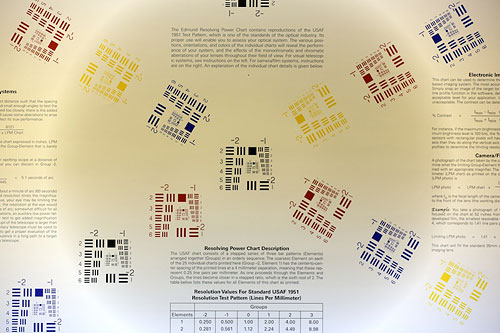Halo effect found with some Canon SLRs, Sigma lenses—but why?
posted Friday, August 10, 2012 at 12:45 PM EST
 An interesting blog post today from Roger Cicala at LensRentals details a problem uncovered with certain combinations of Sigma lenses and Canon SLR bodies. It appears to be caused by the cameras' Illumination Correction feature, but the manner in which this happens is rather odd.
An interesting blog post today from Roger Cicala at LensRentals details a problem uncovered with certain combinations of Sigma lenses and Canon SLR bodies. It appears to be caused by the cameras' Illumination Correction feature, but the manner in which this happens is rather odd.
In JPEG photos shot with the Sigma APO Macro 150mm F2.8 EX DG OS HSM or Sigma APO Macro 180mm F2.8 EX DG OS HSM lenses, mounted on either a Canon EOS 5D Mark III or Canon EOS-1D X body, there's a fairly bright, abrupt halo ring towards the periphery of the image. Turn off Illumination Correction, or shoot in raw mode and convert outside the camera body, and the problem goes away.
 |
|
This strange halo effect found with certain Sigma lenses on the EOS-1D X and 5D Mark III camera bodies appears only in Illumination Corrected JPEGs--but why? Photo provided by Roger Cicala / LensRentals. |
It's likely that the issue relates to the manner in which third parties must create lenses compatible with proprietary lens mounts. Typically, third-party lenses simply tell the attached camera body that they are an existing, first-party lens model that has attributes as close as possible to their own. At first blush, it could seem that's the answer: the particular lens being emulated to satisfy the camera body has an equally strong and abrupt shading characteristic that isn't present in Sigma's own lenses, but that the body believes it needs to correct for.
There's a reason that explanation might not hold water, though. The problem seems to be specific only to the Canon 5D Mark III and 1D X bodies; older Canon bodies tested by LensRentals don't show the issue, even though they include Illumination Correction. One would expect that for a given lens, the Illumination Correction applied in older bodies wouldn't differ from that applied by newer bodies; the lens' vignetting doesn't change when you slap on a new body, after all. (The problem also doesn 't appear with other Sigma lenses tested by LensRentals, nor with current Canon SLRs such as the T4i and 7D on updated firmware--but given their APS-C crop, the issue would likely be outside the area covered by their imagers.)
So... what causes the problem? If you have any ideas, we'd love to hear them. (And so would Roger, we're sure.) Share your thoughts in the comments below!